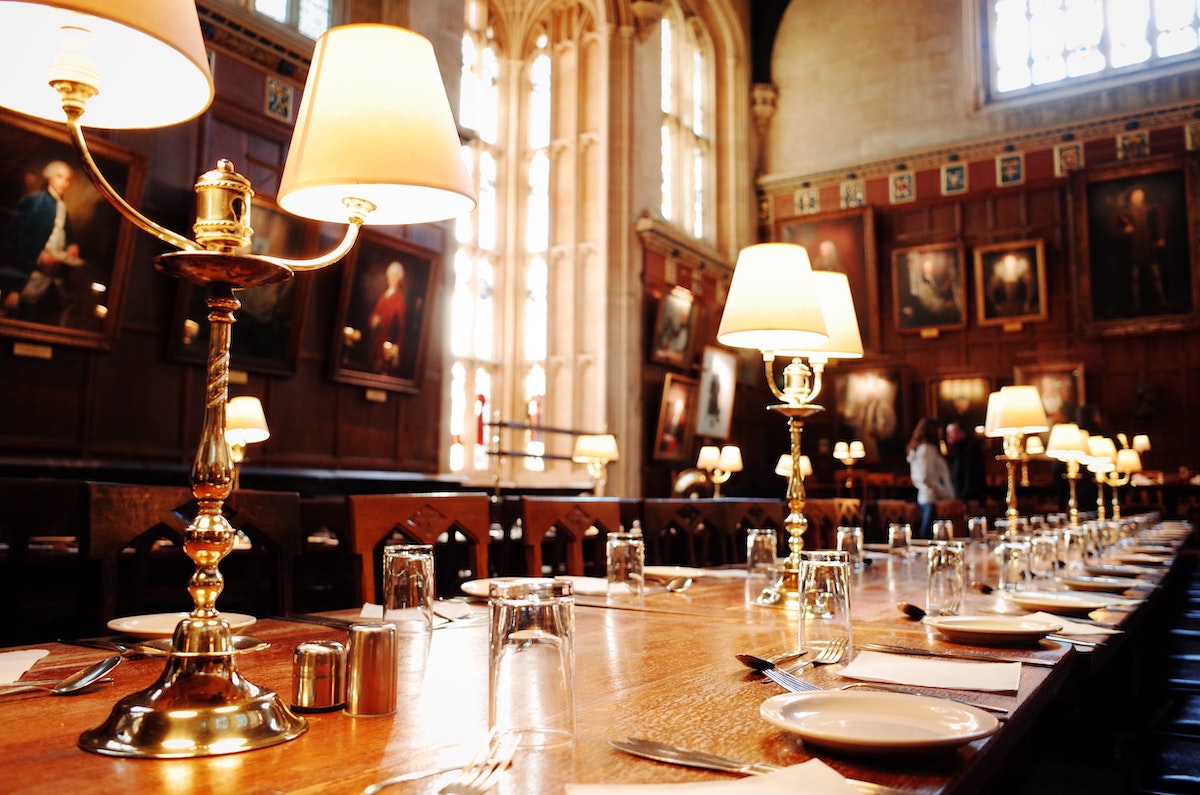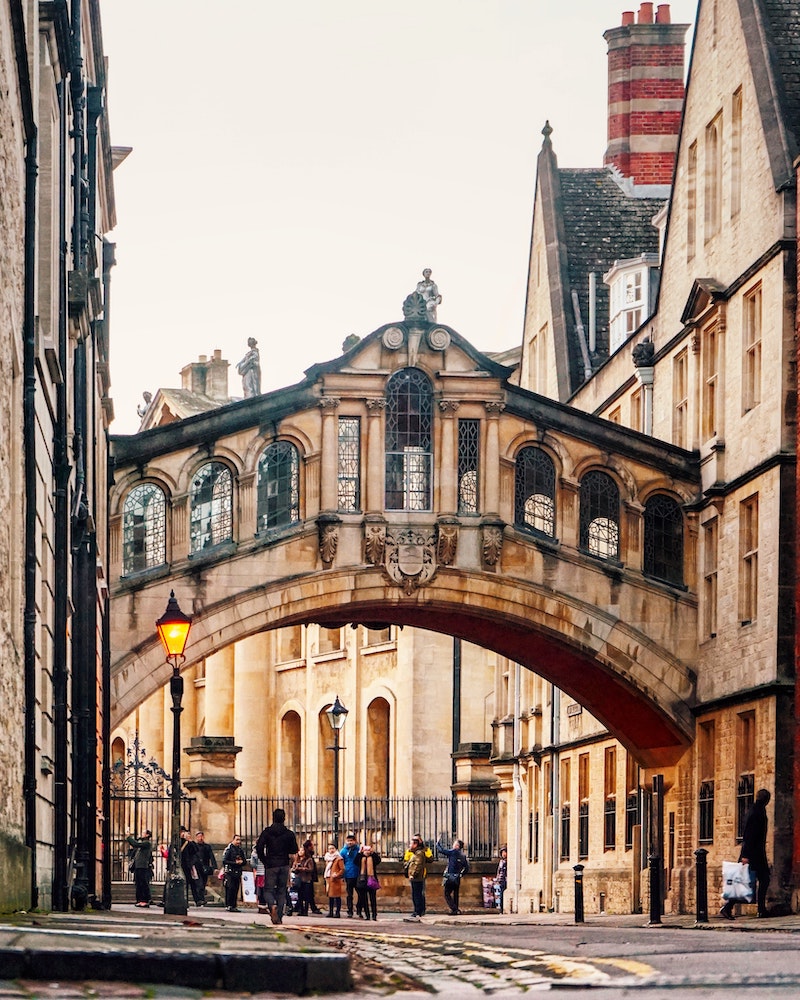
4 Lessons I Learned While Studying Abroad at Oxford
By: Georgette Eva
Skip to Section
Keep off the grass. That’s just one of the several rules to remember while studying abroad at Oxford. Sure the grass in the quad may look inviting and luscious and green, but it’s off limits. This means no standing, no sitting, and no dancing, or so our guide jokingly said on our induction tour of the campuses.
I had the opportunity to study abroad at Oxford University for the Michaelmas Term, which runs from October to December. For my program, I lived in a house on the stretch of Banbury Road between Summertown and City Centre. I stayed with 30 other college students simply trying to do our best to assimilate into the English lifestyle.
1: Don’t Set Fire to the Library

Photo by Tim Wildsmith on Unsplash
Oxford University’s reputation precedes itself. It’s one of the oldest universities in the world with notable alumni like John Donne, Margaret Thatcher, and, yes, Hugh Grant. J.R.R. Tolkien and C.S. Lewis used to meet at the Eagle and Child pub to discuss literature. Lewis Carroll wrote Alice in Wonderland while punting on the Thames. They based the Harry Potter dining hall on the one in Christ Church College. Basically, just throw a stone and you’ll hit something of note or at least someone who will tell you all about it.
To join the ranks of Donne, Thatcher, and Grant, the first step to becoming a true student at one of the 38 colleges of the university is to get a library card. This card was my VIP pass to meals, access to libraries, and proof to others that I actually attended class.
The Bodleian Library—affectionately called the Bod—is the second largest library in England. It carries about 10 to 12 million books, most of which are held in storage a few miles away, so mini blue and red vans transport the requested texts to the reading room of choice. To join the system, you have to swear an oath promising not to defile books or remove them from the library. I also had to promise not to set the library aflame, which was a tad extreme but part of the tradition, I supposed.
I always felt slightly smug gaining access to the Radcliffe Camera, the iconic Oxford building with the blue dome. It was one of my favorite places to study for tutorials and was where I would spend most of my days.
It was cold and drafty like any true castle and had bookshelves with creaky ladders lining the curved walls. It was always quiet, so I was hyper aware when I had to sneeze or turn a page. They cleverly tacked leather onto the floor to muffle the sound of walking, and there were more windows for light.
Fewer people ventured to the upper level too because of the lack of electrical sockets, so this also meant fewer lamps. I once spent five hours reading there, and finally had to leave because my eyes were starting to lose focus.
But if I wasn’t in my once-a-week tutorial or exploring the city, I was sitting in the Camera and taking careful notes for my tutorial with a wizened old don.
This don ruthlessly marked my essays and had a judgmental stare. She even haunted my dreams at night, especially since I made the fatal error of calling the medieval era the Middle Ages on our first meeting.
2: Be Prepared for Your Tutorial

Photo by Ben Seymour on Unsplash
The system at Oxford turned my norm of lecture halls and classes of 20, which we consider small, entirely around. There I sat in my don’s office, usually cozy and quaint, exposed to pure attention, and I felt like a deer in headlights.
I used to think I was a good student, actually. I was always eager and prepared, but I guess not enough for a don. I can laugh about the experience now, but that hour I spent in her presence must be one of the most intimidating experiences of my life. I never understood the unnerving power of silence or my careful choice of words until those sessions.
Tutorials consisted of one to two students with an instructor, the don—my Medieval tutorial overwhelmed our don with three people—and we met once a week to discuss a prompt. The rest of the week was spent in the reading rooms, researching for a 2,000-word essay, reading novels, or scouring texts.
Lucky for me, each Oxford college had a bar where we could drink our tutorial sorrows down, and my host college, Keble, had a fantastic bartender.
There were late nights and hard drinks, tears and shaking fists to the sky, but I can honestly say that little by little, I became a better scholar. I wrote 20 essays of 2,000 words or more. I could converse semi-intelligently about Margaret of Anjou. I discovered an interest in Dickens. I never felt more proud of myself.
3: No Robe, No Service

Photo by Soyoung Han on Unsplash
Never forget the black robe for dinner. The black robes are a must for eating in the dining hall, and they are where the term “gownie” comes from—as opposed to “townies” who just live there.
While these black robes sound exotic, they are what my friend Jill called “glorified vests” and had no bearing to the Hogwarts robes we desired. Still, they are a statement of distinction, where the length of robe hints at your degree: the more robe you billow, clearly the more you’ve learned.
This was demonstrated as we waited for the dons to enter the dining hall, their gowns billowing near their ankles en route to the high table. Following their entrance, everyone stands for prayer, and sitting back down requires teamwork, as the wooden bench needs to be tucked back under the long table.
The entire dinner experience is fancy compared to our cafeterias. Waiters serve a three-course meal family style, including dessert. They also sell bottles of wine to enjoy with whatever variation of potato was being served. You could count on some sort of spud every night.
Yet there were those times when I just craved something of home, and I would head out to the McDonald’s on Cornmarket Street to guiltily hole myself on the second floor, eating a hamburger with the best tasting meat I’ve ever had from fast-food.
4: Just Get Lost

Photo by Ugur Akdemir on Unsplash
The boots I wore in Oxford are now down on the heel and toe from all the cobblestones, sidewalks, and side streets I navigated. Yet I can’t throw them away.
Some may call it procrastination, but I prefer to think of it as necessary exploration. With the pressure of tutorials and essays, I found myself needing several breaks, like punting on the Cherwell River or just walking around. Without plans or maps, I’d leave the library to clear my head and see where I’d end up. Bicycling was another popular alternative, but I couldn’t get used to driving on the left side of the road.
Oxford’s fun like a maze, where a curving road behind the Bridge of Sighs can lead to the shops on Cornmarket Street. The side streets leading away from the crowds can bring you into the Covered Market, which pungently smells of fish and raw meat. This turned into a self-test where I would pick a destination and see if I could get there through back streets.
This led me to the Oxford University Press, which you can tour if you send an e-mail request. I explored Blackwell’s book shop on Broad Street and its subsequent music and art stores. Though the shop itself has several small floors to explore, the top with the used books was my favorite.
I walked around the Covered Market and watched bakers put wedding cakes together, discovered a love of baguettewiches and Ben’s cookies, and found a store selling top hats. I found Logic Lane. I just wanted to know as much I could about the city and the architecture and the horrible cobblestones, because I didn’t want to miss out, and walking, getting lost, was the best thing to do it.
On my last days there, I went with a group and played tourists. A lot of the museums and sights are free, like the Ashmolean Museum and, my favorite, the Pitt Rivers Museum. Pitt Rivers reminded me of a really interesting uncle’s attic—if my uncle had the skeleton of the famous Dodo, that is.
For a couple pounds, we walked up the many staircases of University Church to see Oxford in its entirety. It’s a small squeeze, especially when you get into the tower’s balcony, but right there when you get out, is the blue dome of the Radcliffe Camera. Walk around to the other side and see City Centre, bustling below. I made out the side streets and shortcuts I loved and saw just how much of city I explored.
I am extremely grateful for my time at Oxford. I’m glad that I chose this program and had that group people on Banbury Road with me to experience it.
Featured image via Unsplash.
Information published on this website and across our networks can change over time. Stories and recommendations reflect the subjective opinions of our writers. You should consult multiple sources to ensure you have the most current, safe, and correct details for your own research and plans.
Frayed Passport is a participant in the Amazon Associates Program, an affiliate advertising program designed to provide a means for sites to earn advertising fees by advertising and linking to Amazon.com. We also may share links to other affiliates and sponsors in articles across our website.




